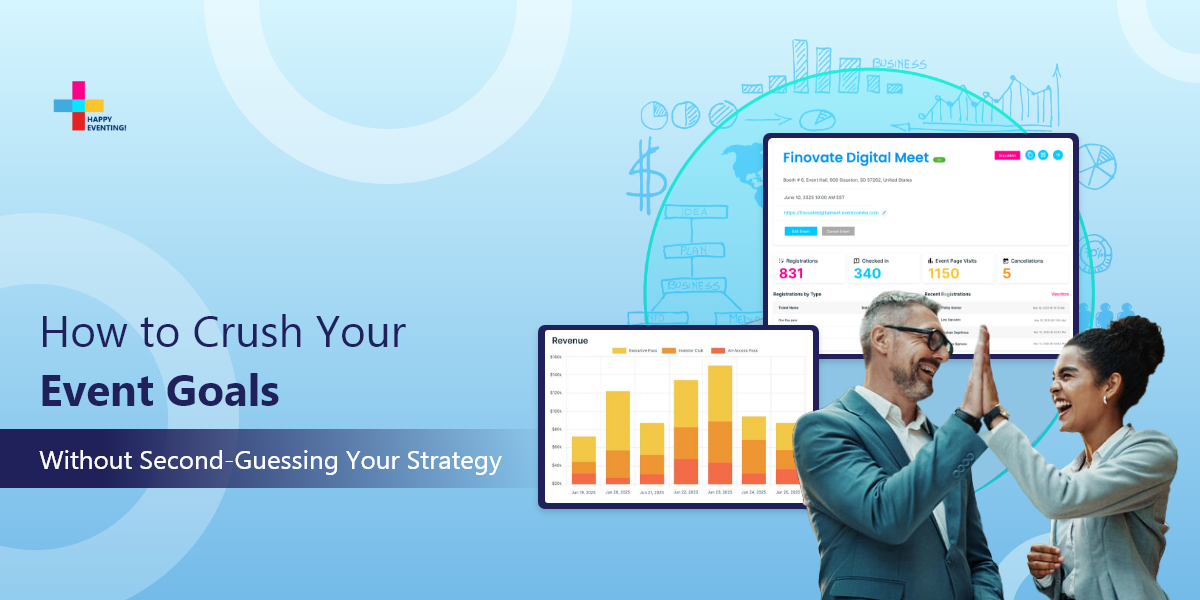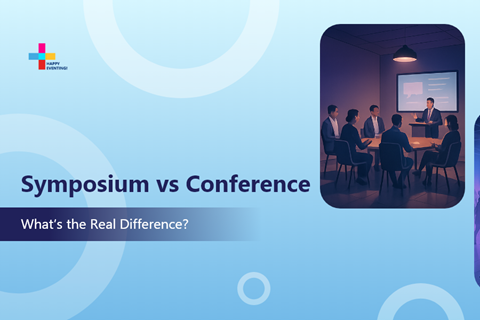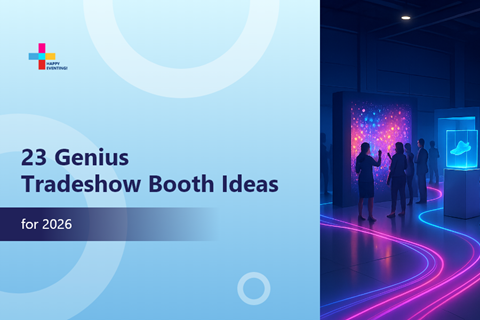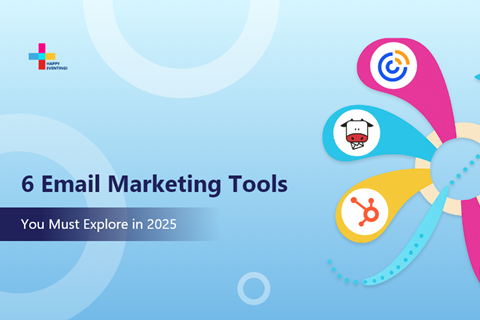

If you’re an event organizer, you know the drill. Event goals often sound fantastic in the initial brainstorming session, but when it’s time for execution, they can easily collapse. Without a clear roadmap, you risk budget overruns, missed opportunities, and poor attendee experiences. With immersive formats and rising audience expectations, soft goals like “let’s boost attendance” or “make it memorable” no longer cut it. That’s why top organizers use structured goal-setting frameworks to tie every event detail to broader business objectives.
Here’s where the FRAME-Work comes into play—helping event organizers shift from ambiguous plans to clear, repeatable systems for success.
The FRAME-Work breaks goal setting into five robust steps, each packed with strategies to align your event with modern trends and measurable objectives.
Ditch guesswork—set your event goals using hard data. Tap historical metrics, audience insights, market trends, and competitor benchmarks to lock in targets for attendance, engagement, pipeline, and revenue.
How to Do It
The Result
By forecasting with data, you set clear, realistic goals that are backed by evidence, not guesswork. With data-driven predictions, you know exactly what targets to hit—whether it’s attendance, engagement, or content resonance. This approach ensures that your goals are practical and achievable, setting your event up for measurable success.
Own your event with precise, real-time reporting. Don’t wait to assemble reports post-event. Monitor and adapt as your event unfolds to keep your strategy sharp and responsive.
How to Do It
The Result
Real-time monitoring empowers you to run your event like a pro and gives you the power to control your event’s destiny. You can tweak goals instantly based on live data—whether it’s redirecting foot traffic or shifting marketing focus. This flexibility ensures your goals aren’t just met—they’re maximized for maximum impact and ROI.
Simplify your event by automating repetitive tasks like confirmations, reminders, lead syncing, and feedback collection using the right event tech stack.
How to Do It
The Result
Automation eliminates bottlenecks, giving your team the freedom to focus on high-level strategy. A tech stack with automation features eliminates errors and lets your team zero in on set goals—like experiential marketing and nurturing high-quality leads. A streamlined process ensures your goals are not only achievable but delivered seamlessly.
Track and amplify engagement metrics—attendee participation and engagement, content interactions, social mentions, and feedback—to help you quantify your event’s impact and value.
How to Do It
The Result
By measuring attendee engagement apart from other data, you gain unmatched clarity on what’s driving your event’s success. By measuring participation, interactions, and feedback, you can track, tweak, and optimize your goals—like aiming for high poll response rates or top session ratings.
Incorporate adaptability into your event strategy with cloud-based and fully scalable event tech solutions. These tools allow for quick adjustments, whether you’re transitioning to a fully virtual format, managing venue changes, or using instant communication tools to stay connected.
How to Do It
The Result
Flexibility empowers you to own your event’s success, regardless of any curveballs. With cloud-based platforms and agile event tech, you can pivot quickly to unexpected changes—like a format shift or attendance spike. This ensures your goals for engagement, attendance, and post-event ROI stay clear, realistic, and achievable—even when things change.
With FRAME in place, here’s how to turn it into real-world execution. These six practical tips will bring your event goals to life:
1. Focus on outcomes, not just tasks: Set goals based on impact, like achieving a 4.5/5 feedback score, rather than ticking off activities like hosting 10 sessions. Use past data and live feedback to guide your targets and make real-time adjustments.
→ Helps you set goals that measure real success, not just activity.
2. Cascade goals for team alignment: Break big-picture event goals into clear, actionable goals for each team. Align everyone through pre-event workshops and monitor progress with shared dashboards.
→ Ensures all teams work toward a unified event goal.
3. Track leading indicators for predictive planning: Watch early signals like registration numbers or app engagement to predict outcomes and pivot strategies quickly. Use tools like QR codes and live analytics to gather insights.
→ Makes your goal-setting proactive and flexible, not reactive.
4. Anchor everything to a North Star metric: Choose one guiding metric—such as lead conversions or post-event ROI—and align all smaller goals to strengthen it. Integrate CRM tools or existing tools to keep tracking simple and focused.
→ Keeps your goal-setting clear, measurable, and purpose-driven.
5. Set stretch goals to spark innovation: Aim higher with bold targets, like increasing attendee engagement by 70% with gamified apps, interactive features, or exclusive VIP networking opportunities.
→ Drives your team to set ambitious, standout event goals delivering innovative events that stand out.
6. Use feedback loops for agile goal setting: Capture real-time attendee feedback with quick polls or sentiment trackers and tweak your sessions or strategies on the fly.
→ Allows you to set evolving goals that stay relevant and impactful and adapt to attendee needs in real-time.
Vague goals are a recipe for chaos in today’s event industry landscape. Having a solid framework to rely on is essential when things get unclear. The FRAME-Work flips the script, equipping organizers with a no-nonsense system to set precise, measurable objectives and pairs with the latest event tech to deliver sky-high expectations. And with the right tech stack like Eventcombo, you’re equipped to execute flawlessly.
Book your free demo now and see how it all comes together.

In the event industry, we often see terms used interchangeably, but precision matters. When you're planning a gathering, understanding the difference between a symposium and a conference is more than just...

The trade show floor of 2026 will run on attention, with experience as the real currency. Until now, most trade show booths have followed a predictable playbook—static displays, repetitive product loops, and uninspired...

Events aren't just about that “show time.” How you attract attendees matters. How you follow up after the event matters even more. Think of beautiful email templates, targeted automation, and powerful analytics.